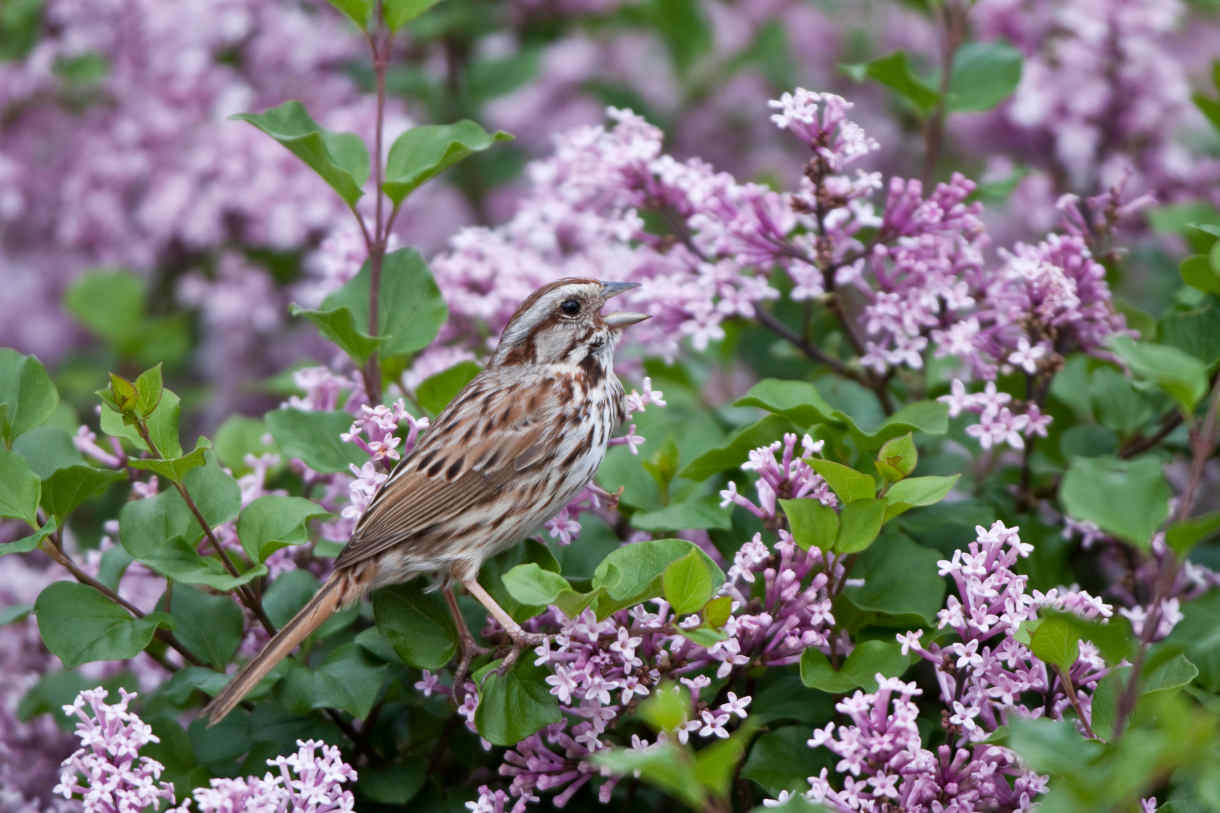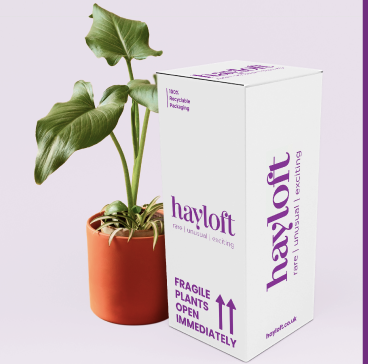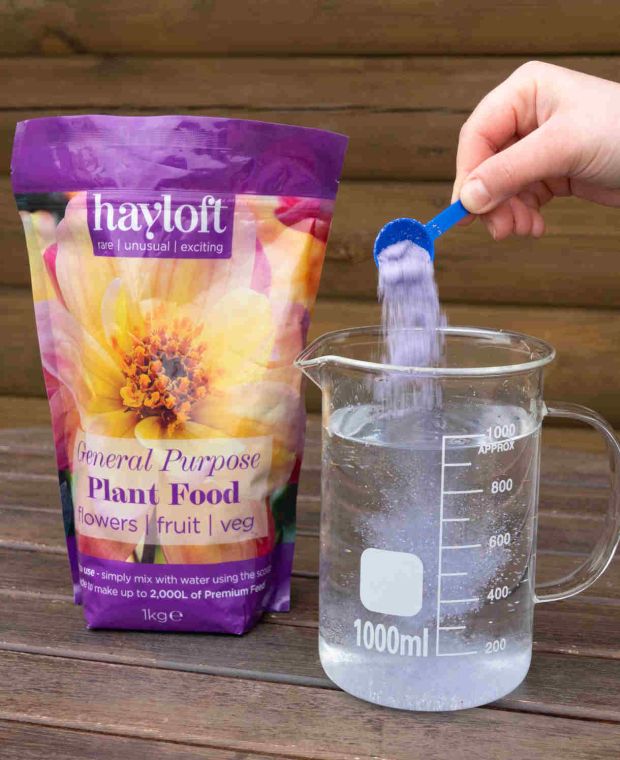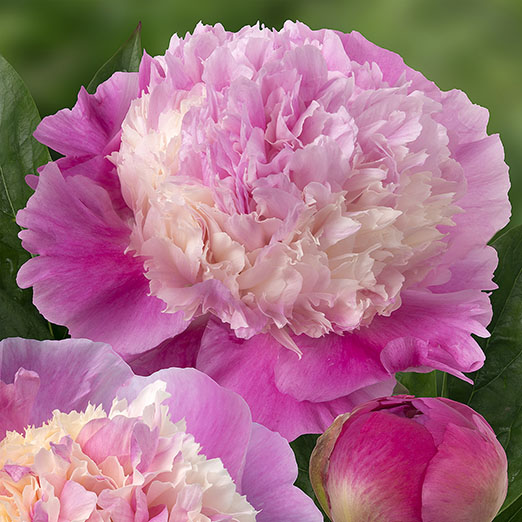How to grow Syringa
Also known as lilac, syringa is a genus of around 20 species of deciduous trees and shrubs in the olive family, closely related to privet (Ligustrum). The most widely grown species is the common lilac, Syringa vulgaris, a traditional feature of English country gardens which has been cultivated and bred over many years to offer a range of sizes and flower colours. Other species vary in size, habit, and flowering, as detailed below.
Syringa is easy to grow and is valued for its highly fragrant blooms. It is a good choice for chalky or alkaline soil (though is less happy on acidic soils), and the many dwarf varieties available means it can also be grown in a container.
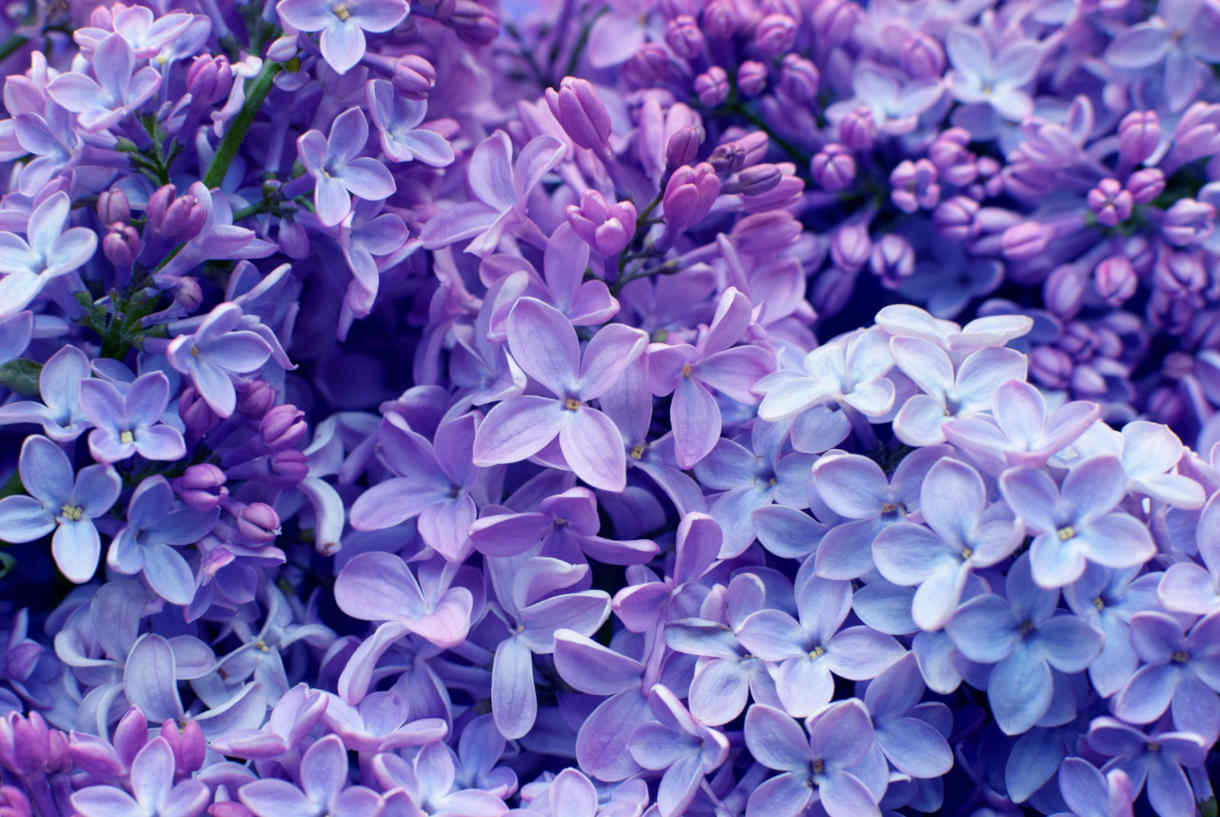
Zantedeschia is a genus of flowering plants from the family Araceae and is native to southern Africa. With a rich history dating back to the Ancient Romans, these deciduous or semi-evergreen perennials have been used as a symbol of celebration. Zantedeschia was Named after Professor Giovanni Zantedeschia, an Italian botanist.
There are two main forms of Zantedeschia: hardy and tender. Hardy forms of the plant can be grown outdoors, enjoy moist soil and full sun or partially shaded conditions - these are known as Arum lilies. Tender forms of Zantedeschia prefer being grown in containers or pots and should be brought inside over the winter - these are known as Calla lilies.
With tuberous flora in all colours from whites, yellows and oranges to deep reds and purples, Zantedeschias are not to be overlooked in any garden, as long as they have sufficient sunlight to grow in.
Ready to learn more about growing Zantedeschia? Read on for all there is to know...
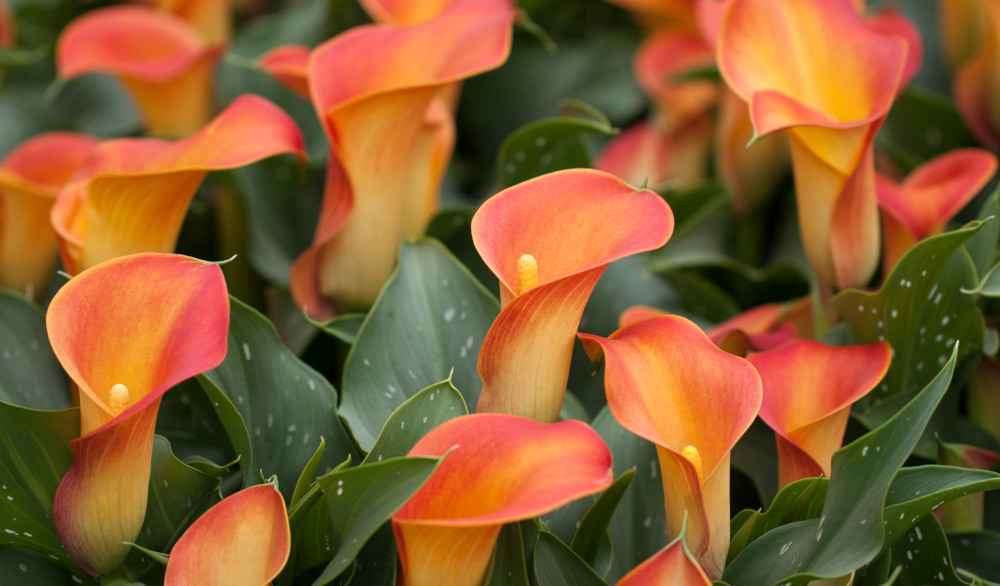
Key Information
Soil pH
Position
Hardiness

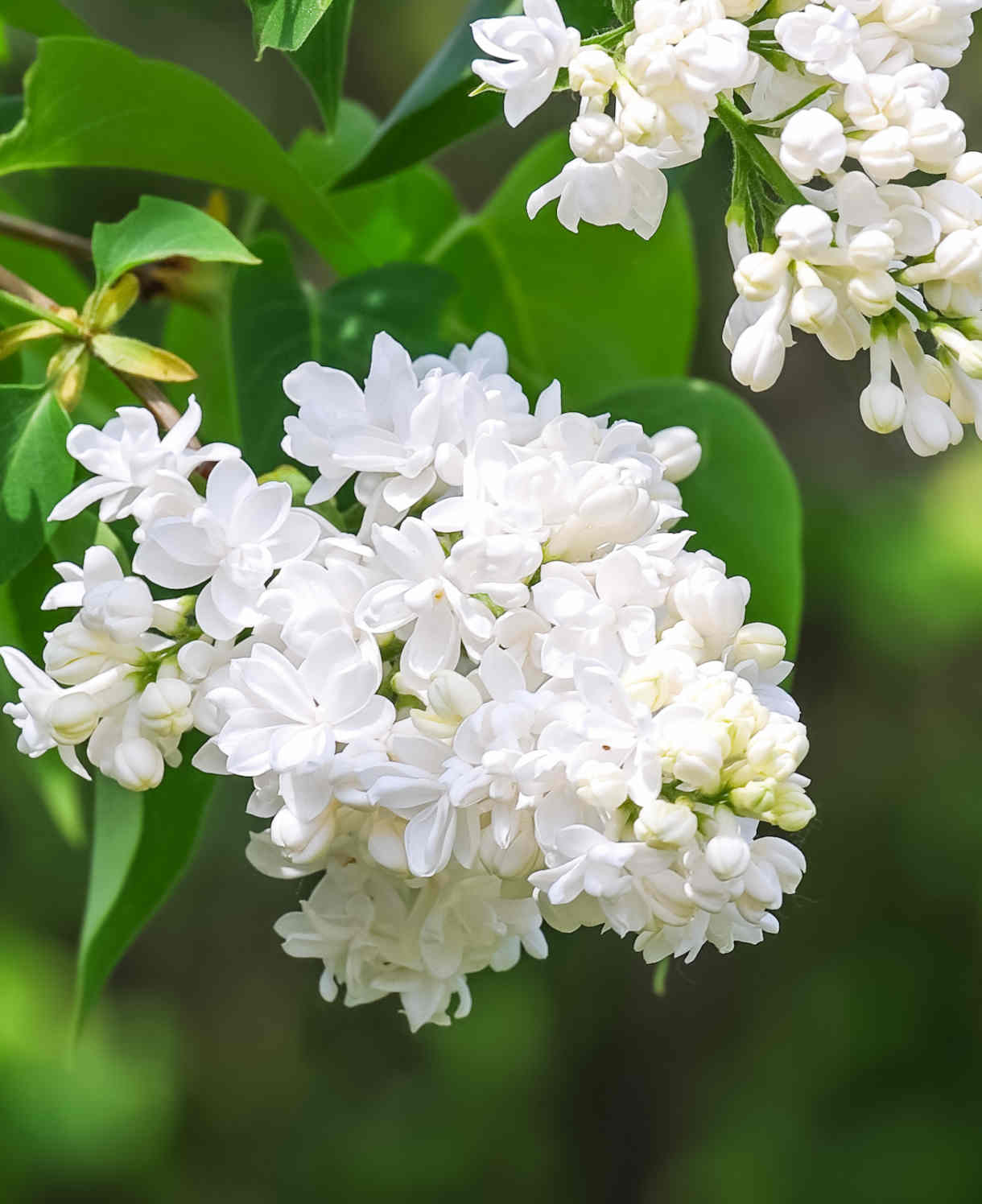
Where & when to plant Syringa
Position - Full sun. Ideally sheltered as, whilst fully hardy, the new growth may be damaged by a late frost.
Soil - Fertile, humus-rich, and well-draining with a neutral to alkaline pH.
Flowering Period - Can be spring or summer, depending on the species. Some may repeat flower, such as the Boomerang and Flowerfesta series (see below).
Hardiness - Hardy. To what extent depends on the species/ cultivar – can range from H4 (-5 to -10°C) to H7 (-20°C and below), with the majority at the hardier end of that scale.
Horticultural Divisions - Here, we’ve put together a handy, at-a-glance guide to the syringas most likely to be encountered by UK gardeners:
S. vulgaris (Common lilac) Spreading shrub or small tree. Flowers late spring to early summer. In its straight form it reaches 7 metres and bears lilac blooms, though there are many smaller cultivars available (their eventual height more like 4 metres), offering a range of flower colours. Usually rated H6, though a few cultivars are slightly less hardy. ‘Beauty of Moscow’ is H4, and ‘Madame Florent Stepman’ H5.
S. meyeri (Korean lilac) Small, rounded shrub. Flowers late spring and early summer, bearing small flower panicles. Reaches up to 2 metres in height, though popular cultivated forms tend to be even smaller, such as ‘Palibin’ (1.5 metres, H5), and the repeat flowering Flowerfesta series (1.25 metres, H7). Ideal for smaller gardens and containers.
S. Boomerang series A hybrid form, flowering in spring and then again in late summer. Available in a range of colours. Height 1.5 to 1.8 metres. H6.
S. x hyacinthiflora (Early flowering lilac) Spreading shrub. Large panicles of flowers in mid to late spring. Height 3-5 metres depending on cultivar. H6.
S.pubescens subsp. patula Spreading shrub with nodding panicles of delicate, long-throated flowers. Height 4 metres, though a there is a popular dwarf form (‘Miss Kim’) which remains at 2 metres. H6.
S. x laciniata (Cut-leaf lilac/ feathered Persian lilac) Spreading shrub with fine, dissected foliage. Flowers late spring. Height 2.4 metres. H6.
S. komarowii subsp. reflexa (Nodding lilac) Vigorous shrub with slender, nodding flower panicles in late spring and early summer. Height 4 metres. H6.
Like all deciduous trees and shrubs, syringa can be planted in the autumn, winter, or spring months (October to April), avoiding frozen or waterlogged ground. The optimal time is early spring, as the soil begins to warm and the buds swell. Try to avoid a summer planting as woody plants struggle to establish well from this.
Larger forms of syringa make excellent standalone specimen plants, perhaps in a lawn or the centre of a courtyard. Smaller forms can be incorporated into borders, while the smallest grow quite happily in a large container.
Syringa requires a period of winter chill for good blooming, so will not do well in a conservatory or greenhouse.
How to plant Syringa
Water well and allow to drain before planting. Then:
· For planting in the open ground, dig the soil area over, removing any large stones and weeds and breaking up any lumps. Mix in plenty of organic matter such as manure or garden compost.
· Rake level and firm with your heels. Rake level again.
· Dig a hole twice the width of the roots.
· Place the plant in the hole, ensuring the top of the root ball sits level with the surface of the soil. To high and the roots can dry out, too low and the stem can rot.
· Backfill with soil and firm in gently with your foot.
· Soak well with water.
· Mulch around the base with well-rotted organic matter such as manure or garden compost.
· Single-stemmed trees benefit from staking to help protect from wind damage (this is less important for multi-stemmed shrubs, or younger tree specimens still in their small, sapling phase). Taking care to avoid the roots, knock a stake into the ground, angled into the prevailing wind. Attach to the main trunk with a rubber stake tie. Remember to check and loosen this as the tree grows.
· It is also worth protecting newly planted trees with spiral tree guards, to prevent browsing deer and other wildlife stripping the bark.
· For planting in a container, first choose an appropriately sized pot. The best practice is to start just a few centimetres larger than the rootball and repot into a slightly larger size every year. Always ensure there are plenty of drainage holes in the bottom.
· If you are using a large or heavy pot, it can be a good idea to fill and plant it in situ to save yourself the trouble of moving once full.
· Use a loam-based compost suitable for mature plants (John Innes No 3 is ideal), with plenty of horticultural grit mixed in, and, if not already present in the compost (check the description on the bag) some slow-release fertiliser granules.
· Start by partially filling the pot with compost; enough so that when placed on it the top of the roots sit about 3cm lower than the top of the pot.
· Infill all the space surrounding the roots with compost, firming down with your fingers then adding a little more so the plant is held tight.
· Pick up the pot (if you can!) and lightly tap on the potting bench or ground a few times to help further settle the compost around the plant.
· Soak well with water.
· A mulch with horticultural grit will look attractive and help to prevent a ‘cap’ or crust forming on the top of the compost (something container plants can suffer due to the artificial nature of their watering).
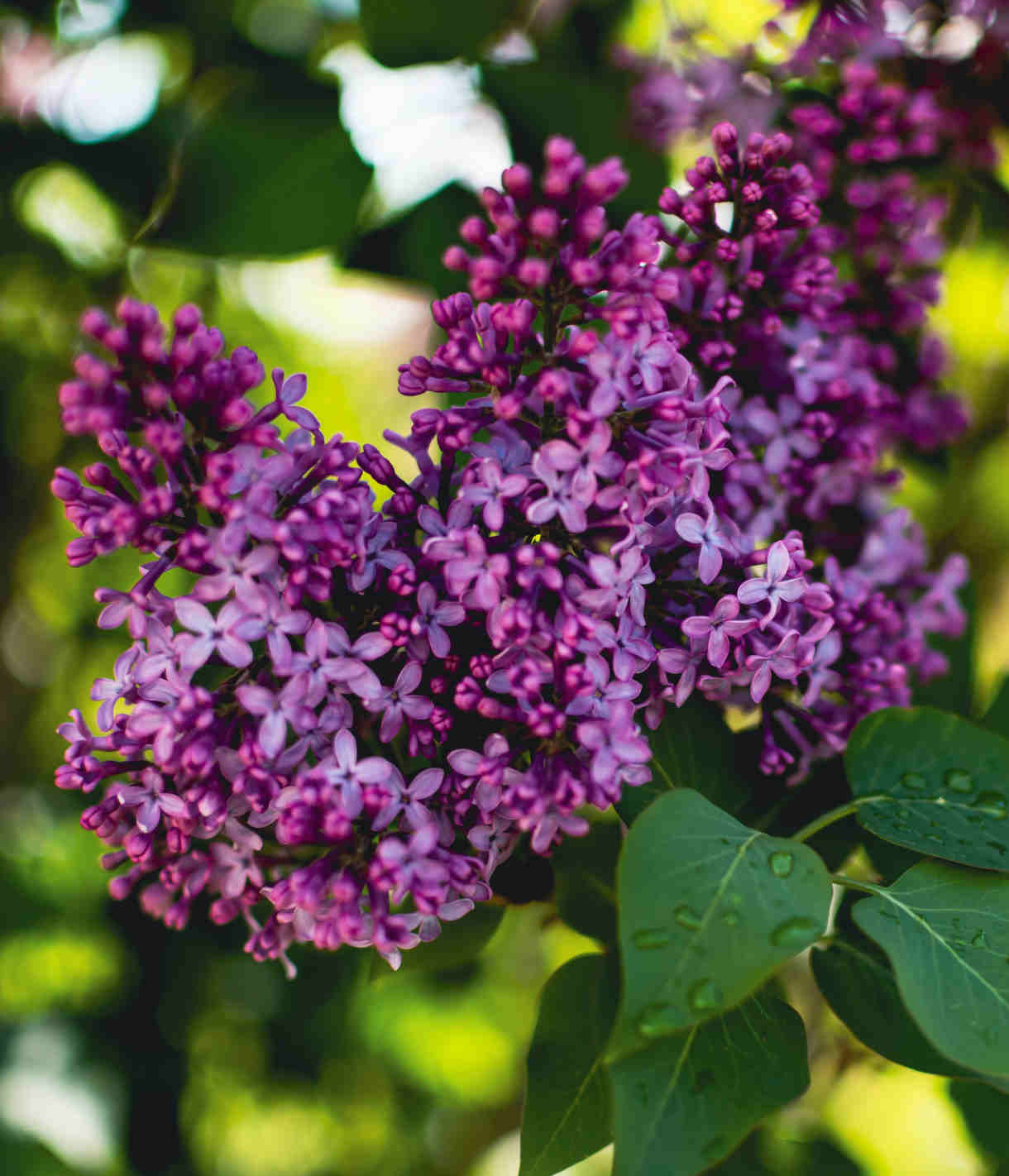
What to plant with Syringa
For maximum impact, grow syringa with other early flowering companions in a similar blue/ pink/ purple colour palette. Our top picks include wisteria, allium, nepeta, aquilegia, and erysimum.
For larger specimens, a late flowering clematis scrambling though the branches can be a brilliant way to extend the season of interest, Clematis ‘Etoile Violette’ is an ideal choice.
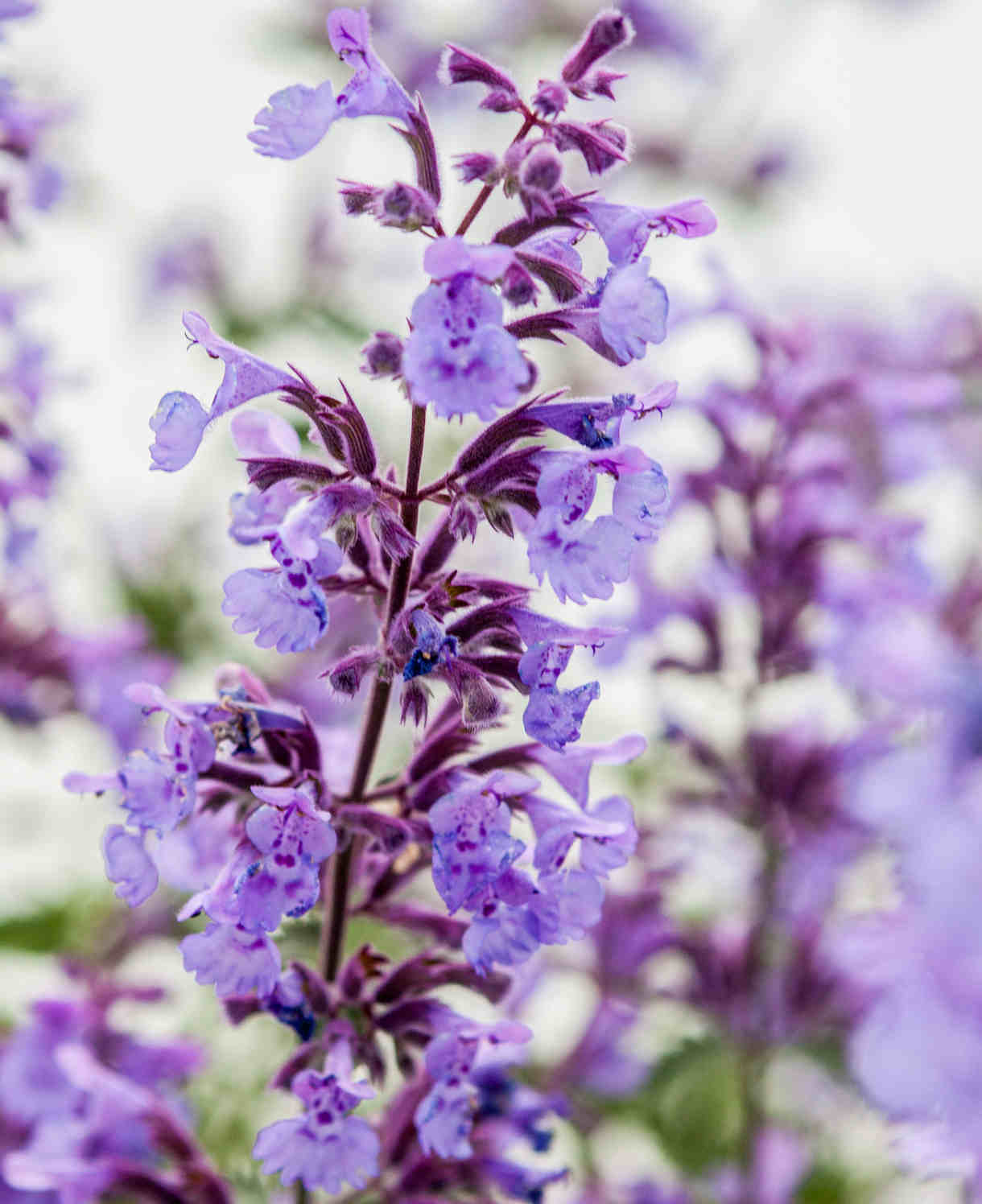
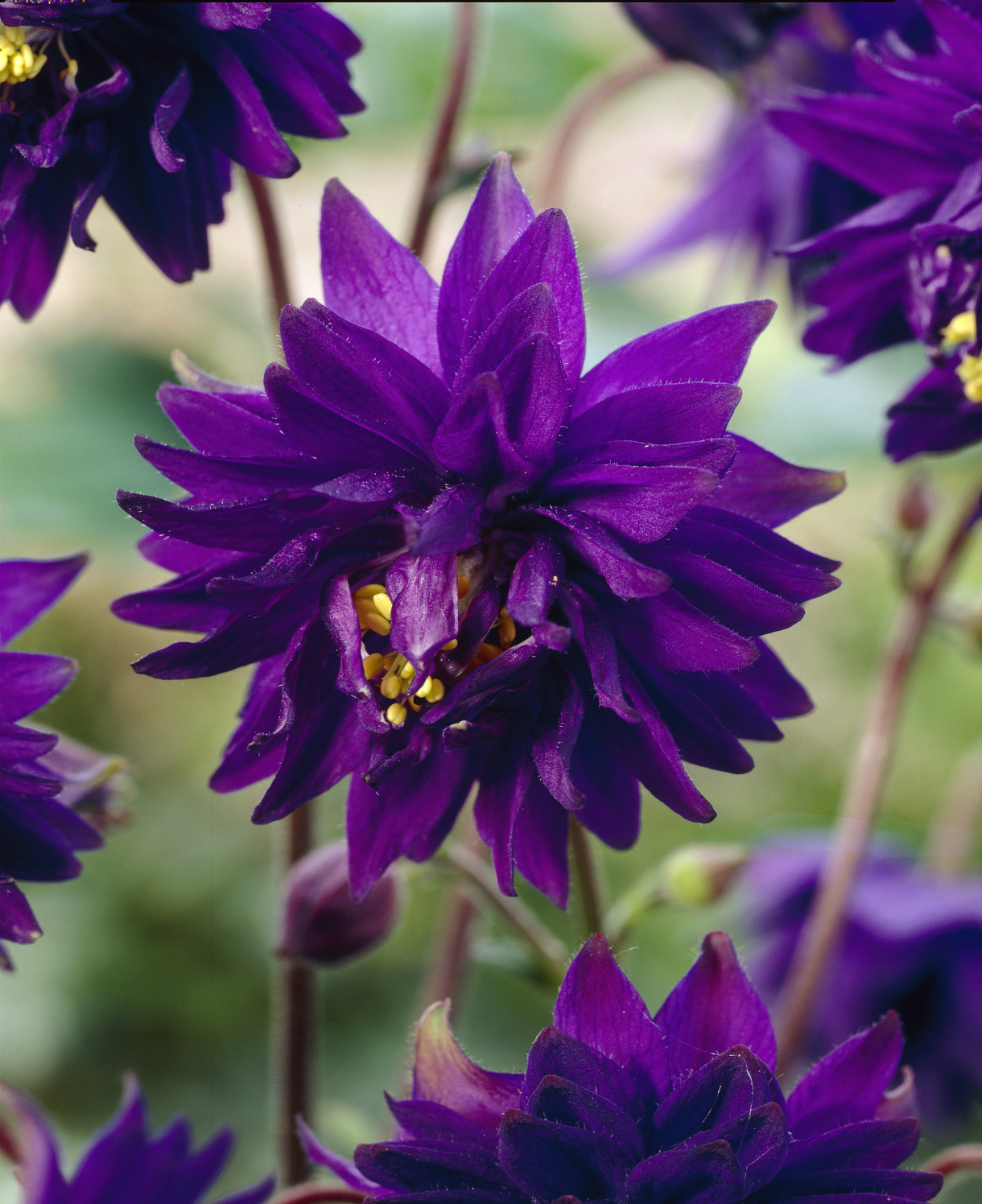
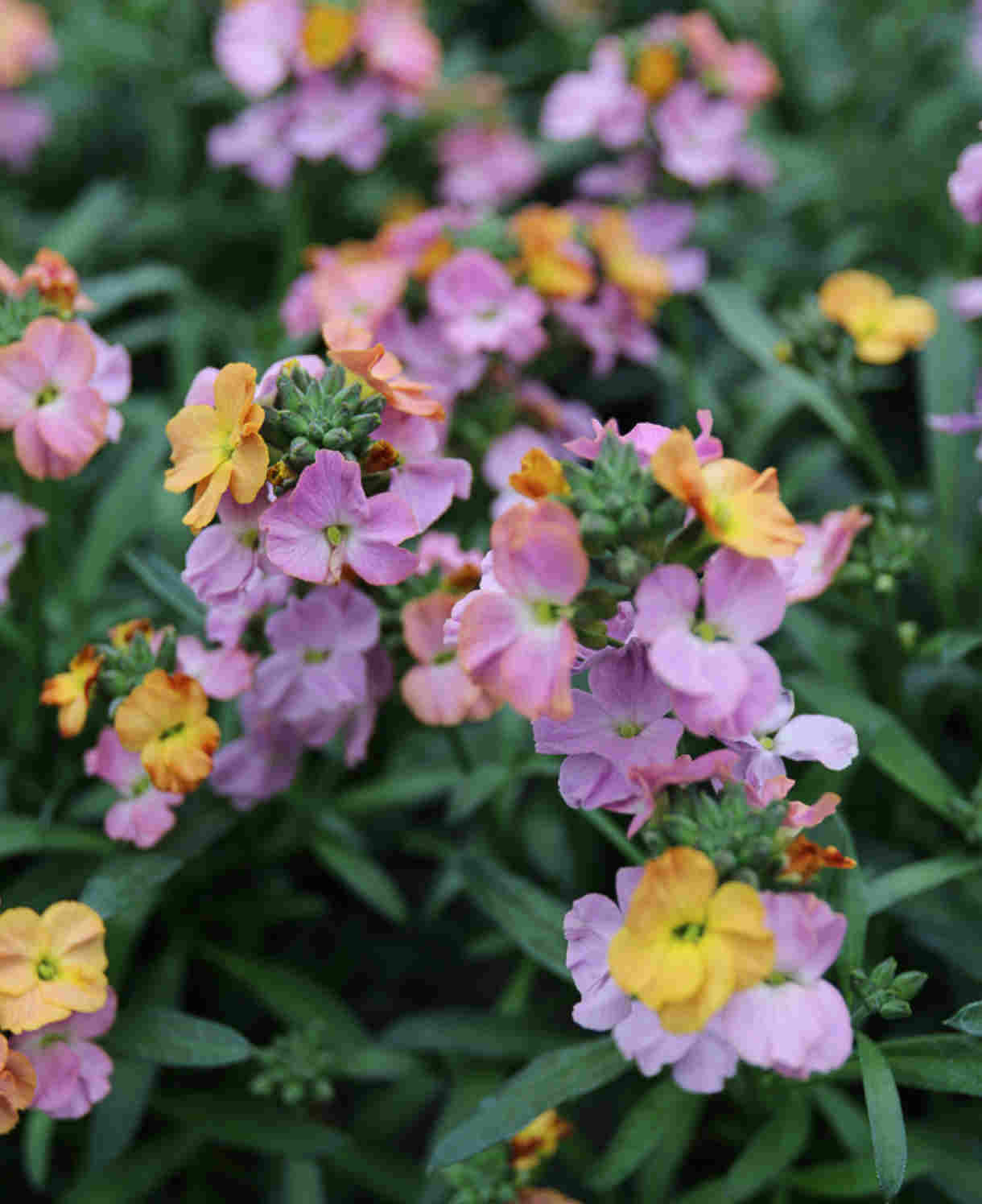
How to care for Syringa
Pruning and Deadheading
Smaller shrubs can be deadheaded as flowers fade.
A light annual prune after flowering is a good way to keep your syringa from becoming leggy and unkempt. Simply nip back flowering stems to a healthy set of leaves below the bloom, removing any dead, diseased, or damaged stems whilst you’re at it. Now is also a good moment to remove any unwanted suckers. Pulling these off, rather than cutting, is the most effective way of avoiding regrowth.
Overgrown specimens can be renovated with a hard prune, best done in late winter. Cut the whole lot down to ground level if you don’t mind missing out on flowering for a year. If you do, the process can be staggered over two or three years – cutting back a half or third of growth each winter.
Watering
Like all woody plants, syringa does best with regular watering for its first couple of growing seasons in the ground to encourage root establishment. After this it should be largely self-sufficient, particularly when given an annual mulch which is useful for locking in moisture – more on this in our ‘Feeding’ section below. Having said this, in our changing climate it can still pay to soak trees during prolonged periods of hot, dry weather, particularly younger specimens.
Container-grown syringa has less access to moisture and needs to be watered regularly throughout every growing season. Aim for infrequent big soakings, rather than little and often, allowing the top few centimetres of compost to dry out before each time. Try to avoid the compost drying out completely, being aware that this can happen in as little as 24 hours during the height of summer, and sometimes even less for very full containers. From mid-autumn, the British climate tends to take over watering needs, though do remember to step in in the event of an unseasonably dry spell.
Feeding
On healthy, fertile soil, an annual mulch of well-rotted organic matter should provide sufficient nutrients for your syringa. This has the added benefit of suppressing weeds and locking in moisture. Autumn and spring are the best times to carry out mulching.
For an extra boost (most needed during the first few years of the plant being in the ground, immediately after a hard renovation prune, or annually if growing in poor soil), apply a general-purpose granular feed such as blood, fish, and bone to the surface of the soil and lightly work it in. This is known as a ‘top dress’ and is best done in late winter or early spring.
Container-grown plants rely even more on the gardener for nutrition. Get off to a flying start by making sure you use a good quality compost specifically for mature plants, then throughout the growing season (March to September) apply a liquid feed every 3-4 weeks. Remember to repot into a slightly larger pot using fresh compost every year or two. In the intervening years and once this is no longer feasible, carry out an annual topdress in spring. Scrape away the top 5cm of compost and replace with fresh, remembering to mix in a little general-purpose slow-release feed.
Cold Protection
Most syringa species are hardy enough to survive a UK winter without the need for additional protection, though new growth can be damaged by a late frost. While not fatal, this can impact flowering that year. For those living in a region prone to late cold snaps (generally further north), it’s a good idea to err on the side of caution and plant syringa in a sheltered location. It’s also best for those gardeners to avoid syringa with a lower hardiness rating of H4 or H5.
Pests and Diseases
Syringa may be affected by lilac blight, honey fungus, leaf miners, thrips, and willow scale. As always, our advice is that by growing healthy, thriving specimens you will be far less likely to experience problems. This means ensuring optimum levels of water, light, and nutrients as per our suggestions above, as well as encouraging a balanced garden ecosystem through limited use of chemicals and provision of safe, natural wildlife habitats.
How to propagate Syringa
The easiest way to propagate Syringa is by harnessing many species’ natural habit of producing suckers from their base. Simply pull these out of the ground, and either pot up to grow on or replant in the desired location. This is best done in spring. For species that don’t produce suckers, softwood cuttings taken in summer are another option:
· Look for sections of non-flowering, current year growth which is firm and woody at the base, while still soft and pliable at the tip. You’re aiming for a cutting of 10 centimetres or less (any longer and they are more likely to dry out and fail). For best results, choose stems where the leaf nodes are close together rather than far apart.
· Using a sharp knife or secateurs, sever the cutting from the plant and put in a plastic bag straight away.
· Fill a pot (or several, if you have a lot of cuttings) with a perlite-heavy compost mix (at least 50% perlite).
· Trim the end of the cutting to just below a node (point at which leaves grow).
· Remove lowest leaves and soft tip, leaving 2-4 leaves.
· If the remaining leaves are large, cut them in half with a sharp knife to reduce water lost through transpiration.
· Insert the cuttings into the compost and water lightly. Several cuttings can be put in the same container if there is enough space to do this without them touching.
· Place in a greenhouse or propagating unit if you have one or covered with a plastic bag on a windowsill if not (out of direct sunlight).
· Keep the cuttings misted and occasionally watered until they root. You will know this has happened when roots emerge out of the bottom of the container, which should take around 6 to 8 weeks.
· Gently remove rooted cuttings and pot them into individual pots. Grow on in a cool yet frost-free environment such as an unheated conservatory, greenhouse, or cold frame, until they are large enough to be planted out as above.
* Many plants carry Plant Breeders Rights and cannot be propagated for commercial purposes.
Common Syringa Questions
Where does Syringa grow?
Syringa grows best in rich, well-managed garden soil in a sunny spot. For gardeners with acidic soil, we recommend container growing instead (remember, dwarf varieties are best for this).
How high does a Syringa grow?
This very much depends on the species and cultivar. Syringa can range from 1.25 to 7 metres, so it’s well worth doing your research to make sure you’re getting the right size for your garden.
Is Syringa poisonous to dogs?
Syringa has no known toxic effects on people or animals.
Can you plant a syringa next to a house?
Syringa has relatively shallow and non-invasive roots, so is safe to plant near a building. We would recommend either leaving a gap of 3-4 metres or going with a dwarf variety.
